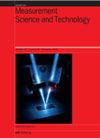基于图卷积解耦头的高精度轻型焊接表面缺陷检测器
IF 2.7
3区 工程技术
Q1 ENGINEERING, MULTIDISCIPLINARY
引用次数: 0
摘要
焊缝表面检测困难的本质在于检测过程中存在大量干扰信息。本研究旨在提高检测精度,同时保持焊缝表面缺陷检测模型的强大部署能力。为了实现这一目标,我们在稳定快速的 Yolo v5 基础上提出了改进的 Yolo-GCH 模型。改进的主要内容是在头部引入图卷积网络和自我注意机制(即 GCH)。该部分的重点是改进 CNN 对复杂环境中类似缺陷的识别能力不足的问题。此外,为了解决复杂焊接环境中存在潜在模糊样本的问题,还采用了 simOTA 的标签分配策略来优化锚点框架。此外,还设计了一种精简结构,旨在提高模型检测速度的同时尽量减少对性能的影响,以增强模型的适用性。结果表明,在保持推理速度的同时,GCH 和 simOTA 的合作显著提高了检测性能。这些策略使 mAP@0.5 提高了 2.5%,焊缝和 8 类缺陷的漏检率分别降低了 32.9% 和 84.1%,超过了其他焊缝表面检测模型。此外,该模型令人印象深刻的适用性在 Yolo-V5 的四个缩放版本中得到了验证。根据提出的策略,Yolo-v5 快速 s 和 n 版本的 FPS 增加了 30 帧以上。这些结果证明了该模型在工业应用中的巨大潜力。本文章由计算机程序翻译,如有差异,请以英文原文为准。
High-accuracy and lightweight weld surface defect detector based on graph convolution decoupling head
The essence of the difficulties for weld surface detection is that there is a lot of interference information during detection. This study aims to enhance the detection accuracy while keeping great deployment capabilities of a detection model for weld surface defects. To achieve this goal, an improved Yolo-GCH model is proposed based on the stable and fast Yolo-v5. The improvements primarily involve introducing a graph convolution network combined with a self-attention mechanism in the head part (i.e., GCH). This component focuses on improving the insufficient recognition capability of CNN for similar defects in complex environments. Furthermore, to address the presence of potentially ambiguous samples in complex welding environments, the label assignment strategy of simOTA is implemented to optimize the anchor frame. Additionally, a streamlined structure, aiming to improve model detection speed while minimizing performance impact, has been designed to enhance the applicability of the model. The results demonstrate that the cooperation of GCH and simOTA significantly improves the detection performance while maintaining the inference speed. These strategies lead to a 2.5% increase in mAP@0.5 and reduce the missing detection rates of weld and 8 types of defects by 32.9% and 84.1% respectively, surpassing other weld surface detection models. Furthermore, the impressive applicability of the model is verified across four scaled versions of Yolo-v5. Based on the proposed strategies, the FPS increases by more than 30 frames in the fast s and n versions of Yolo-v5. These results demonstrate the great potential of the model for industrial applications.
求助全文
通过发布文献求助,成功后即可免费获取论文全文。
去求助
来源期刊

Measurement Science and Technology
工程技术-工程:综合
CiteScore
4.30
自引率
16.70%
发文量
656
审稿时长
4.9 months
期刊介绍:
Measurement Science and Technology publishes articles on new measurement techniques and associated instrumentation. Papers that describe experiments must represent an advance in measurement science or measurement technique rather than the application of established experimental technique. Bearing in mind the multidisciplinary nature of the journal, authors must provide an introduction to their work that makes clear the novelty, significance, broader relevance of their work in a measurement context and relevance to the readership of Measurement Science and Technology. All submitted articles should contain consideration of the uncertainty, precision and/or accuracy of the measurements presented.
Subject coverage includes the theory, practice and application of measurement in physics, chemistry, engineering and the environmental and life sciences from inception to commercial exploitation. Publications in the journal should emphasize the novelty of reported methods, characterize them and demonstrate their performance using examples or applications.
 求助内容:
求助内容: 应助结果提醒方式:
应助结果提醒方式:


